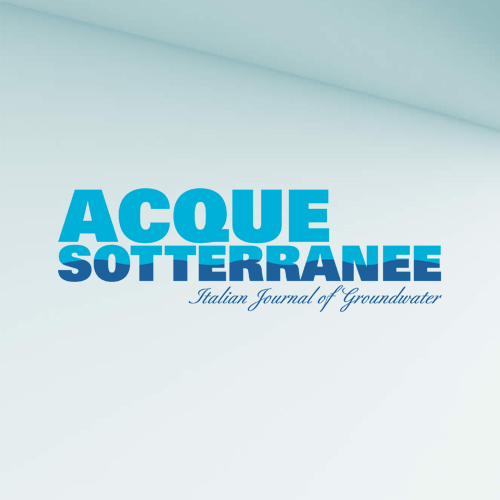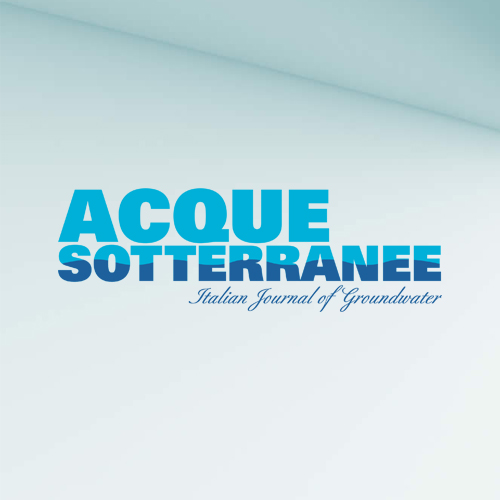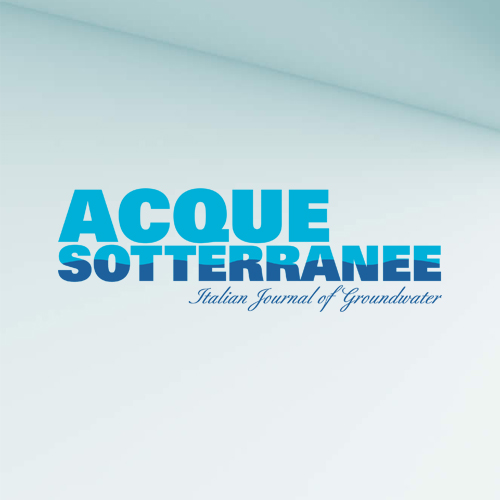Spatio-temporal variability of groundwater hydrochemical features in different hydrogeological settings in Piedmont and Campania regions (Italy), a comparative study
Accepted: 19 March 2024
SUPPLEMENTARY MATERIALS: 106
All claims expressed in this article are solely those of the authors and do not necessarily represent those of their affiliated organizations, or those of the publisher, the editors and the reviewers. Any product that may be evaluated in this article or claim that may be made by its manufacturer is not guaranteed or endorsed by the publisher.
Authors
The spatio-temporal evolution of groundwater chemistry has seen an increase in interest over the last decade at a global level. Identifying and discerning the sources of the natural and anthropogenic compounds and the actual hydrochemical processes, as well as their evolution, is essential to support a sustainable planning for managing and protecting groundwater resources at the present time and in the future. The main objective of this study is the comparison of two study areas in Italy (Piedmont and Campania Regions), different in their geographical and geological contexts and climate conditions, to highlight the similarities and differences in the hydrogeochemical behavior in space and time. Three main ions were considered (NO3 –, SO4 2–, Na+) and analyzed to identify the sources and hydrochemical processes responsible for their spatial distribution in the 2015-2020 period and evaluate the existence and the potential causes of trends in their concentration for the 2000-2020 period. Results highlight specific factors and processes distinguishing the spatial distribution and temporal variability of ion concentrations in Piedmont and Campania study areas. These processes are mainly related to the geological and geographical features of the study areas. In both areas, a significant influence of anthropogenic pressures emerges for both spatial and temporal evolutions, with remarkably increasing trends in NO3 – concentrations. In conclusion, some factors and processes emerge as site-specific, mainly related to the geological aspects and natural hydrochemical processes, whereas others are in common (i.e., anthropogenic impacts); thus, reinforcing the advantage of making comparative studies.
How to Cite

This work is licensed under a Creative Commons Attribution-NonCommercial 4.0 International License.
PAGEPress has chosen to apply the Creative Commons Attribution NonCommercial 4.0 International License (CC BY-NC 4.0) to all manuscripts to be published.
Similar Articles
- Azzurra Lentini, Elisa Meddi, Jorge Pedro Galve, Claudio Papiccio, Francesco La Vigna, Preliminary identification of areas suitable for Sustainable Drainage Systems and Managed Aquifer Recharge to mitigate stormwater flooding phenomena in Rome (Italy) , Acque Sotterranee - Italian Journal of Groundwater: Vol. 11 No. 4 (2022)
- Valentina Vincenzi, Michele Sapigni, Hydrogeological characterization and parameters estimation of the aquifer close to the Adige River (Verona, Italy) for the design of deep excavations , Acque Sotterranee - Italian Journal of Groundwater: Vol. 8 No. 2 (2019)
- Ognjen Bonacci, Tanja Roje-Bonacci, Adrijana Vrsalović, Different groundwater behaviour in deep karst boreholes: the case of Jadro spring basin (Dinaric karst, Croatia) , Acque Sotterranee - Italian Journal of Groundwater: Vol. 12 No. 4 (2023)
- David Banks, From Fourier to Darcy, from Carslaw to Theis: the analogies between the subsurface behaviour of water and heat , Acque Sotterranee - Italian Journal of Groundwater: Vol. 1 No. 3 (2012)
- Delia Cusano, Vincenzo Allocca, Silvio Coda, Daniele Lepore, Massimiliano Vassallo, Pantaleone De Vita, The survey of Italian springs by the National Hydrographic Service, a forgotten database. Structuring and analysis of a dataset of Campania springs (southern Italy) , Acque Sotterranee - Italian Journal of Groundwater: Vol. 11 No. 2 (2022)
- Francesco Maria De Filippi, Giuseppe Sappa, Magnesium and groundwater flow relationship in karst aquifers: a tool for exploitation management of springs , Acque Sotterranee - Italian Journal of Groundwater: Vol. 12 No. 4 (2023)
- Marwa Aissaoui, Djamel Maizi, Moussa Benhamza, Khalid Azzouz, Abdelhakim Belaroui, Djamel Bengusmia, Identification and mapping of potential recharge in the Middle Seybouse sub-catchment of the Guelma region (North East of Algeria): contribution of remote sensing, multi-criteria analysis, ROC-Curve and GIS , Acque Sotterranee - Italian Journal of Groundwater: Vol. 12 No. 1 (2023)
- Tullia Bonomi, Davide Sartirana, Luca Toscani, Gennaro A. Stefania, Chiara Zanotti, Marco Rotiroti, Agnese Redaelli, Letizia Fumagalli, Modeling groundwater/surface-water interactions and their effects on hydraulic barriers, the case of the industrial area of Mantua (Italy) , Acque Sotterranee - Italian Journal of Groundwater: Vol. 11 No. 2 (2022)
- Nilesh Kumar Meshram, Kalyan Adhikari, Rhitwik Chatterjee, Assessment of Metalaxyl migration through vadose zone of alluvial sandy soil using column experiment and HYDRUS numerical modeling , Acque Sotterranee - Italian Journal of Groundwater: Vol. 12 No. 3 (2023)
- Francesco Luzzini, Dying clothes with black. The springs of Vitriola , Acque Sotterranee - Italian Journal of Groundwater: Vol. 5 No. 3 (2016)
<< < 9 10 11 12 13 14 15 16 17 18 > >>
You may also start an advanced similarity search for this article.


 https://doi.org/10.7343/as-2024-748
https://doi.org/10.7343/as-2024-748










